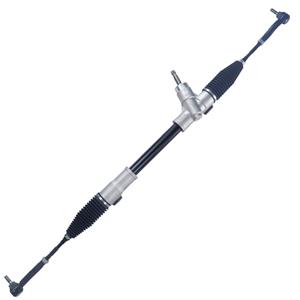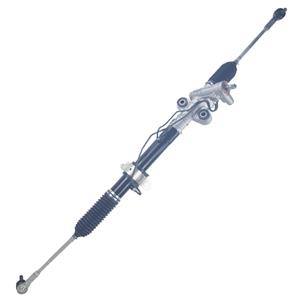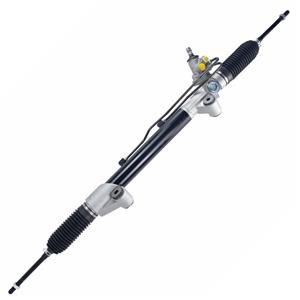What is EPS Vs. Hydraulic Power Steering? Which is Better?
With the continuous development of the automotive industry, the technological innovation of the steering system has greatly improved the driving experience and the handling performance of the vehicle. The steering system is an important part of the vehicle and is directly related to the safety and comfort of the driver. In today's automotive market, there are mainly two types of steering assistance systems: Electronic Power Steering (EPS) and Hydraulic Power Steering (HPS).
These two systems have their own advantages and disadvantages and are suitable for different types of vehicles and driving needs. This article will introduce the working principles, advantages and disadvantages of EPS and hydraulic power steering in detail, and explore their performance in practical applications.
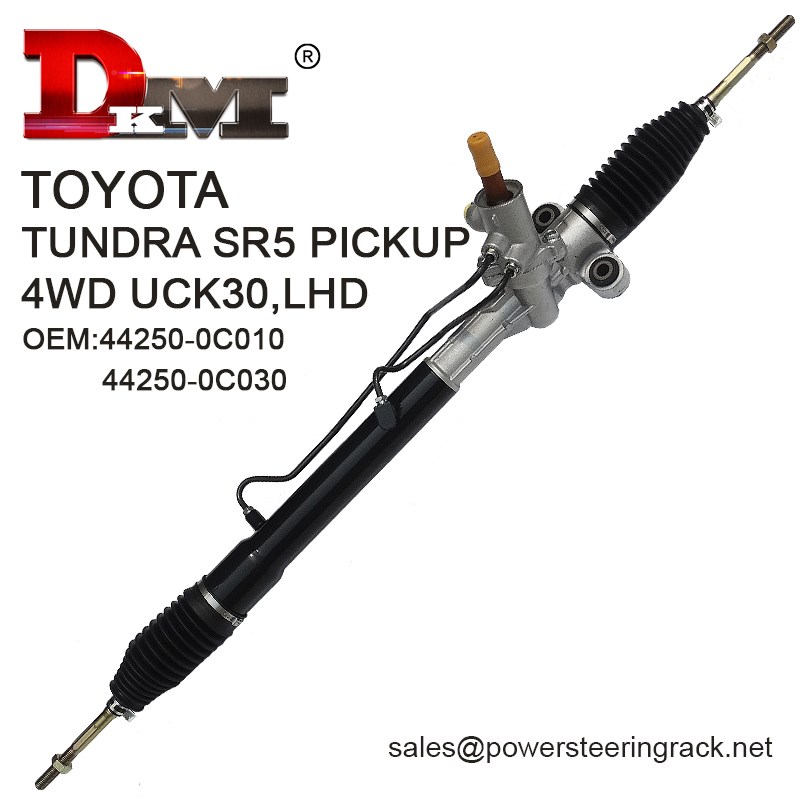
What is Electronic Power Steering System?
The Electronic Power Steering System (EPS) is a steering system that relies on a motor to provide power assistance. Unlike the traditional hydraulic power steering system, EPS eliminates the hydraulic pump and hydraulic pipeline and uses an electric motor to provide steering assistance. The core components of EPS include: steering sensor, electronic control unit (ECU), motor and steering mechanism.
● Steering sensor: used to detect the steering wheel rotation angle and speed.
● Electronic Control Unit (ECU): Responsible for processing sensor data and controlling the working state of the motor.
● Motor: Provides appropriate power assistance according to the instructions of the ECU.
● Steering mechanism: Includes rack and gear, responsible for transmitting steering force to the wheels.
How does the electronic power steering system work?
When the driver turns the steering wheel, the steering sensor detects the steering wheel's turning angle and speed and transmits this data to the ECU. The ECU determines how much power assistance is needed based on this data and then controls the output of the motor. The motor transmits the power assistance to the steering rack through a series of gear mechanisms to assist the driver in completing the steering action. The working principle of EPS is relatively simple. Since the complex components of the hydraulic system are eliminated, the entire system is lighter and more efficient. In addition, the power assistance of the EPS system is adjustable, and the power assistance can be adjusted in real time according to the vehicle speed and driving environment, thereby providing better handling and driving experience.
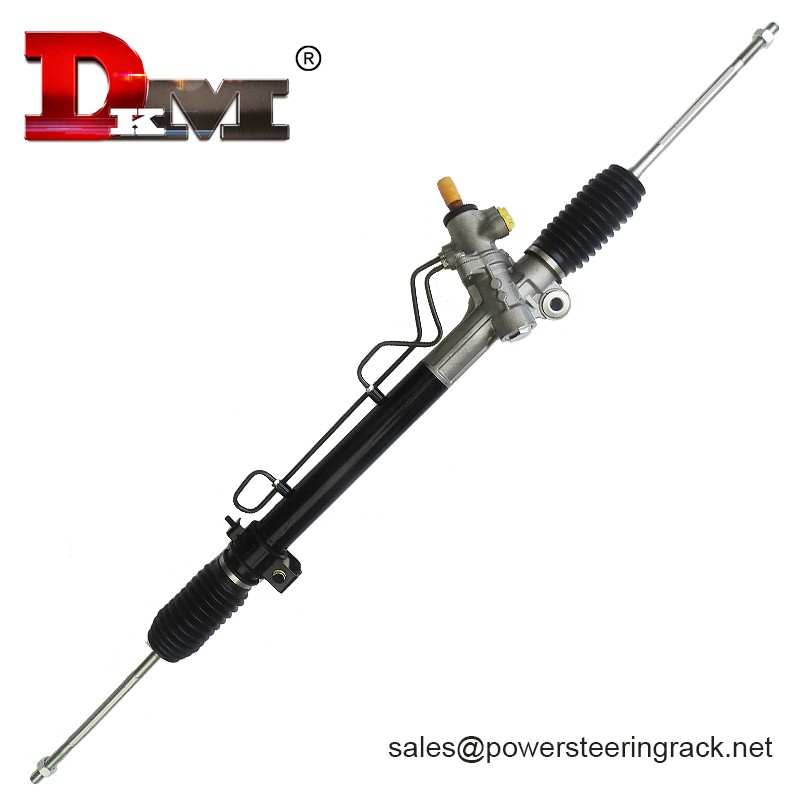
What is Hydraulic Power Steering (HPS)?
Hydraulic Power Steering (HPS) is a steering assistance system widely used in traditional cars. It provides hydraulic power through a hydraulic pump, thereby reducing the driver's effort to turn the steering wheel. The main components of HPS include: hydraulic pump, hydraulic cylinder, steering rack and pinion, hydraulic pipeline.
● Hydraulic pump: usually driven by the engine, used to generate hydraulic pressure.
● Hydraulic cylinder: uses hydraulic pressure to push the steering rack.
● Steering rack and pinion: transmits steering force to the wheels.
● Hydraulic pipeline: a channel for transmitting hydraulic oil.
How does HPS work?
In the hydraulic power steering system, the hydraulic pump is directly driven by the engine. When the driver turns the steering wheel, the hydraulic pump presses the hydraulic oil into the hydraulic cylinder, and the hydraulic pressure generated by the cylinder pushes the steering rack to move, thereby reducing the driver's operating burden. The characteristic of the hydraulic system is that the size of the power assist is proportional to the engine speed, that is, the power assist is larger at low speeds and smaller at high speeds. The HPS system relies on the transmission of hydraulic oil, and the power assist effect is relatively linear, which can provide stable steering assistance under various driving conditions.
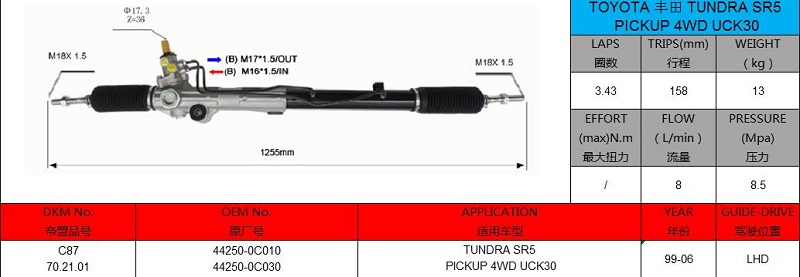
What are the advantages and disadvantages of EPS and HPS?
1. Advantages of EPS
● Lightweight: Since the hydraulic pump and related hydraulic components are eliminated, the EPS system is relatively light, which helps to reduce the total weight of the vehicle and thus improve fuel efficiency.
● Low energy consumption: EPS consumes electrical energy only when power is needed, unlike HPS, which requires continuous power from the engine, which makes EPS more energy-efficient.
● Quick response: The electronic control system allows EPS to quickly adjust the power assistance according to driving conditions, thereby providing more precise steering control.
● Easy integration: EPS can be seamlessly integrated with other electronic control systems (such as lane keeping assist systems) to enhance overall vehicle handling performance.
2. Disadvantages of EPS
● High cost: Due to the complexity of technology, the manufacturing and maintenance costs of EPS systems are relatively high.
● Power dependence: EPS is completely dependent on power supply. If there is a problem with the power system, it may affect the normal operation of the steering power.
● The power assistance feel is not as good as HPS: Although EPS provides adjustable power assistance, some drivers think that the steering feel of EPS is not as natural as that of traditional HPS, especially when driving at high speeds.
3. Advantages of HPS
● Natural power-assistance: The power-assistance of the HPS system is closer to the traditional mechanical steering system, and the steering feedback is more realistic. Many drivers, especially veteran drivers, prefer this.
● Low maintenance cost: Due to mature technology, the manufacturing and maintenance costs of HPS are relatively low, and the maintenance difficulty is also relatively low.
● High reliability: After years of application, the HPS system has relatively mature technology and a low failure rate.
4. Disadvantages of HPS
● Heavy weight: The HPS system has a large overall weight due to the inclusion of hydraulic pumps, cylinders and hydraulic pipelines, which has a certain impact on the fuel efficiency of the vehicle.
● High energy consumption: HPS requires the engine to continuously provide power, and consumes energy even when driving in a straight line, resulting in low energy efficiency.
● High maintenance requirements: The hydraulic system needs to regularly check the status of the hydraulic oil, and after long-term use, problems such as oil leakage and wear may occur, requiring regular maintenance.
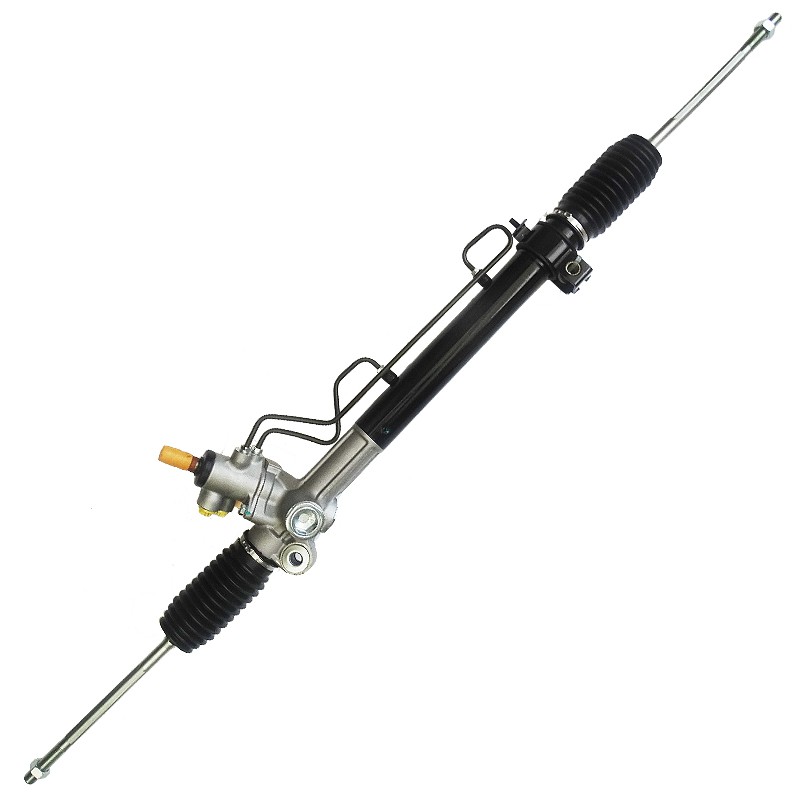
Which is better in the actual application of EPS and HPS?
1. Driving experience
In actual driving, the power assist of the EPS system can be adjusted according to the vehicle speed and driving environment, which enables it to provide appropriate power assist under different driving conditions. For example, when driving at low speed, EPS will provide greater power assist to help the driver turn the steering wheel easily; while at high speed, EPS will reduce the power assist to enhance the feedback of the steering wheel, thereby improving the handling stability.
In contrast, the power assist of the HPS system is directly related to the engine speed, so it provides greater power assist at low speed and less power assist at high speed. For drivers who are accustomed to mechanical steering systems, the steering feel provided by HPS is more natural and linear, allowing the driver to perceive road conditions and vehicle dynamics more clearly.
2. Applicable models
The EPS system is widely used in small cars, hybrid vehicles and electric vehicles due to its light weight and energy-saving characteristics. Such vehicles usually have high requirements for weight and energy efficiency. The application of EPS can significantly improve the fuel economy and driving comfort of the whole vehicle. In addition, since EPS can be integrated with other electronic control systems, the application prospects of EPS are very broad today as intelligent and autonomous driving technologies are becoming more popular.
Hydraulic power steering racks are more common in large vehicles and some high-performance models that focus on driving experience. These types of vehicles have high requirements for the durability, reliability and steering feel of the steering system, and the HPS system has obvious advantages in this regard. Especially in heavy-loaded vehicles, the hydraulic power steering rack can provide sufficient steering assistance to ensure that it can still turn easily under heavy loads.
3. Repair and maintenance
In terms of repair and maintenance, the EPS system requires less maintenance in daily maintenance due to its relatively simple structure and the lack of hydraulic pipelines and hydraulic pumps. However, since the EPS system relies entirely on electronic control, once a failure occurs, the repair difficulty and cost are high.
Hydraulic power steering racks need to regularly check the status of the hydraulic oil to ensure that there is no oil leakage in the system. In addition, since the components in the hydraulic system will wear over time, regular inspection and replacement of hydraulic cylinders and hydraulic pipelines are necessary. Despite this, the maintenance cost of the hydraulic power steering rack is relatively low, and most problems can be prevented through regular maintenance.
Summary of EPS and hydraulic power steering systems
EPS and hydraulic power steering systems each have their own unique advantages and applicable scenarios. EPS is suitable for vehicles with high requirements for fuel economy and driving comfort due to its lightness, energy saving and quick response. It is also an important part of the development of intelligent vehicles. Hydraulic power steering system continues to play an important role in large vehicles and high-performance models with its natural steering feel and high reliability.
When choosing EPS or HPS, it mainly depends on the purpose of the vehicle, the needs of the driver and the preference for the steering system. For consumers who pursue fuel economy and high-tech driving experience, EPS is undoubtedly a better choice. For drivers who focus on driving feel and system reliability, HPS can provide a more expected driving experience.
Whether EPS or HPS, as an important part of the steering system of modern cars, they play an irreplaceable role in their respective fields. Understanding the working principles and advantages and disadvantages of these two systems will not only help consumers make more informed choices when buying a car, but also help improve driving experience and driving safety.


